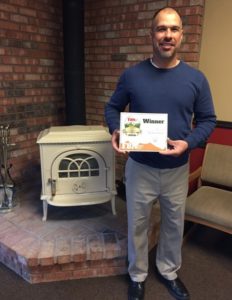How can patients help keep foot ulcers at bay?
Foot ulcers can be caused by many different ailments in the body, from diabetes to circulatory problems, to issues with the mechanics of the foot or leg. Foot and ankle surgeons have to dig deep to find the underlying causes and use treatment methods beyond just caring for the wound itself to fix the problem and prevent the wounds from reoccurring.
Structural factors of the foot and leg can lead to foot sores caused by rubbing or an imbalance. When the patient also has circulatory issues, a sore on the foot can be difficult to heal. We work with a patient to change the mechanics of the foot so the rub creating the ulcer is alleviated, especially to prevent sores from appearing repeatedly, a warning sign for amputation.
Procedures to stabilize the foot and help with rubbing include: lengthening and releasing tendons (tendon balancing and transfers) to help feet and ankles move more efficiently; cutting of the bones (osteotomies) to reposition them in a more aligned position; fusing the joints (arthrodesis) to create stability in the foot/ankle; replacing the joint (arthroplasty) to restore joint range of motion; and correction of deformities such as hammertoes, bunions, flat foot, high arches and bone spurs.
How can patients help keep foot ulcers at bay? Foot and ankle surgeons advise heeding “early warning signs” that prevent difficult-to-heal wounds on the feet before they happen. Telltale signs that an ulcer may be around the corner include:
Swelling. Look for a larger than normal area on the foot or ankle. The foot or ankle may look puffy or engorged and larger than the other.
Temperature. Look for temperature changes in the feet. When the skin feels too hot or too cold, there may be cause for alarm. Cold feet might mean a circulatory issue, whereas hot feet might mean infection.
Color changes. Look for redness in the skin. Often before ulcers develop, there is redness and even other colors that appear before the skin forms an ulcer.
Calluses. If a callus changes colors or develops dark, «dried blood» colored spots in them, it may be time to have a foot and ankle surgeon look at it for a proper diagnosis.
Paying close attention to feet to prevent injuries can also decrease the likelihood of infection. Patients can take the following precautions to protect their feet:
Inspect feet daily using a flashlight and a mirror to help see the bottoms of the feet.
Use preventive skin care. If a patient has dry, cracking feet, moisturizing them is critical to prevent sores. Control moisture that can result in blisters by using powder to keep feet dry.
Wear protective and fitting shoes and socks in the house at all times to prevent injury to the feet. Change socks daily, and more often if feet tend to get sweaty. Avoid socks with holes or seams.
See a foot and ankle surgeon annually for a monofilament test to screen for the loss of protective sensation in feet.
To keep feet healthy, foot and ankle surgeons agree, being proactive is key. Patients who experience repeat foot ulcers fare best when they take charge of their foot health with the help of a foot and ankle surgeon. FBN
By Anthony Rosales
For more information on foot wounds and ulcers, contact Dr.
Anthony Rosales, DPM in Flagstaff.
Anthony Rosales DPM, FACFAS, a foot surgeon with offices in Flagstaff and Page, is board certified in foot surgery by the American Board of Foot and Ankle Surgery. He is a member of the American College of Foot and Ankle Surgeons.







